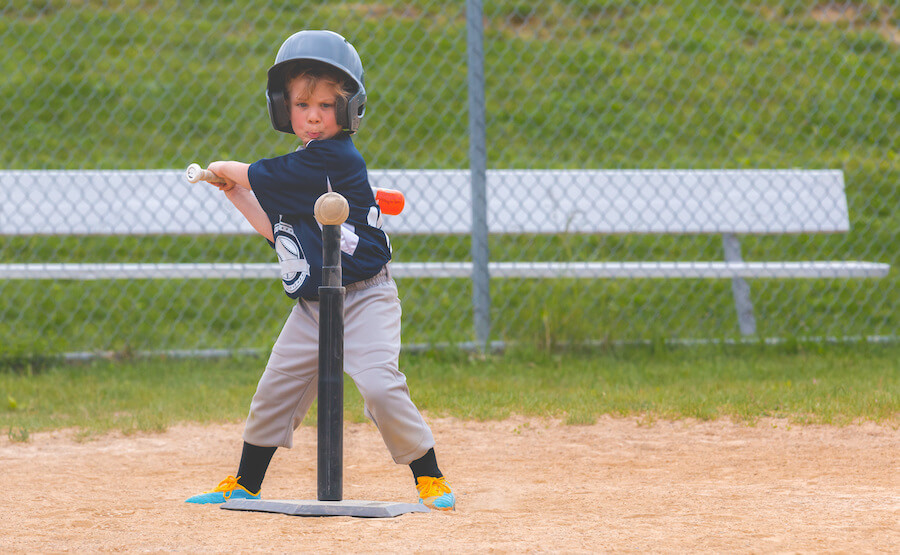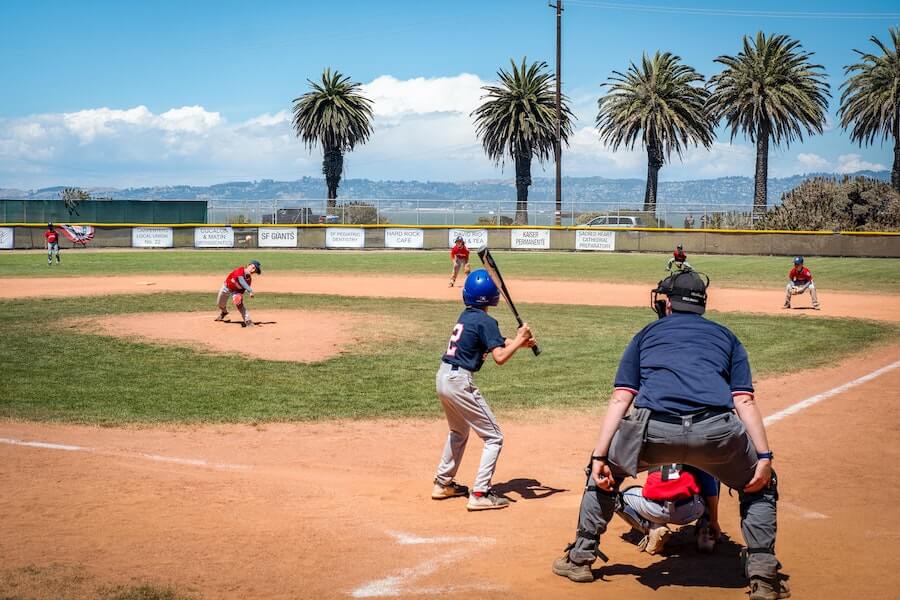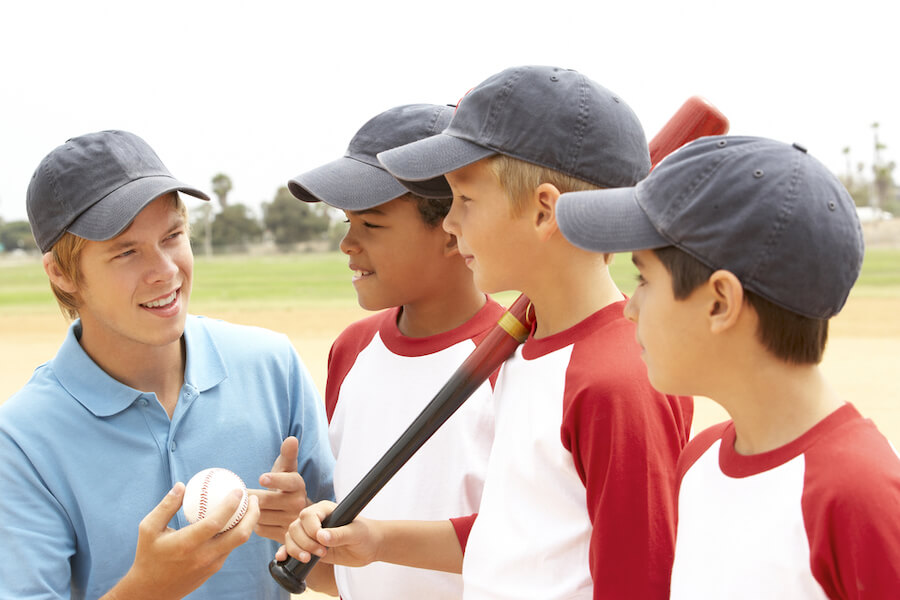The demand for Tee-ball coaches is always high. Tee-ball is a fantastic sport that plays a crucial role in children’s physical and social development.

It is a fun way to introduce your children to sports. Often considered as the entry point to baseball, Tee-ball helps children understand the game’s fundamentals and foster their love for the sport.
The role of a Tee-ball coach is wider than introducing children to the basics of baseball, like hitting, throwing, and catching.
But it’s more about boosting moral values like teamwork, discipline, perseverance, and sportsmanship.
Thus the article will cover various aspects of being an effective Tee-ball coach. We will discuss how you can help the young player polish their skills and build characteristics that can impact their lives.
How to Be a Good Tee-ball Coach
Being a Tee-ball coach is indeed a rewarding experience. You are shaping young players under your guidance and positively impacting their lives. But to be a good coach, several aspects matter.
Below is a detailed discussion of various aspects that can help you excel as a Tee-ball coach.
Understanding the Role of a Tee-ball Coach
Whether you are a seasoned coach or a new parent taking responsibility as a coach, your understanding of the role of a Tee-ball coach is crucial. This makes it necessary to acknowledge your responsibilities. Your primary responsibilities include the following:
- Teaching basic skills like base running, hitting, and catching by tailoring them accordingly to children’s skill level.
- Ensuring a safe playing environment for young players by following necessary safety guidelines and using proper equipment.
- Organizing multiple practices and team activities
- Communicating and coordinating with parents, players, and other coaches to address issues, provide updates and maintain a supportive community.
- Development of sportsmanship and respect within players for the game and other players.
- Establishing yourself as a role model and inspiring children to develop their skills.
Understanding the Player’s Perspective
Before you start working on Tee-ball players, understanding how they see the game is essential.
For example, for them, it’s all about batting using their arm, and your challenge is to make them realize that their legs play a significant role in batting and throughout the game.
Furthermore, for kids, running between bases is like a tag game that they often play during recess.
For them, the main focus is being safe at the base. Thus, you may find many players would prefer to run—other skills like catching, fielding, and throwing come later.
Teaching these fundamentals in a constructive and friendly environment can be a successful early approach.
Acknowledge the realities of Tee-ball.
Setting realistic expectations for your player is important to be a better coach. A case in point is the developing brain of children.
Due to a less developed brain, children often lack perception, affecting their catching skills.
So if they are missing catches, it might be frustrating, but it’s crucial to understand and consider these developmental limitations in this age group.
Furthermore, you can provide kids with gloves, balls, and bats, but baseball is not guaranteed to only focus on the ground.
Kids may find other activities, like playing with other kids, exploring bugs, airplanes, etc., more fascinating.
Adults who understand and accept these realities will have a better time with the kids. Coaches who resist acknowledging the Tee-ball world’s nature may experience frustration, confusion, and increased stress.
Gathering necessary equipment and resources
Tools, gear, and other resources are crucial for your season’s success. These include:
- Equipment: Tee-ball involves players with ages ranging from 4-6 years. Thus it’s important to have age-appropriate equipment. This equipment includes tees, bats, gloves, helmets, and bases. Additionally, inspect their condition and replace any damaged items.
- Practice supplies: Collect the practicing aids like cones, agility ladders, and batting cages to further boost the practice experience.
- Field access and Maintenance: Confirm the field availability for practice sessions. Further, ensure that the playing surface is safe and well-maintained.
- Coaching resources: If you are coaching for the first time, ensure that you have access to the coaching manual. Furthermore, try to boost your expertise by learning new skills and drills through instructional videos.
The teaching of Fundamental skills
Teaching fundamental skills like hitting, throwing, and catching is the most crucial part of the primary development of Tee-ball players.
Below is a brief discussion of each fundamental skill that can help you teach effectively to kids.

Hitting:
- Body positioning is an important prospect of hitting. Teach kids about their standing posture, like evenly distributed weight, slightly bent knees, and perfect fee-shoulder width.
- Next to positioning is gripping. Teach children to hold the bat and grip their fingers around the handle with thumbs aligned accordingly.
- Swing mechanics, a crucial part of hitting, holds great significance. Teach kids about hand-eye coordination, weight transfer, and how they can develop consistency and accuracy in their swings.
Throwing:
- For Throwing, understanding how to grip the ball accurately is essential. Teach kids how to gain a better grip over the ball and accuracy in their throws.
- Elaborate on the footwork for throwing. Ensure kids are stepping toward the target while throwing.
- Work on the kid’s arm action for a more circular motion. Start from the glove side and finish with a wrist snap.
- Include throwing drills to boost accuracy and gradually increase the distance.
Catching:
- Teach players how to position their hands correctly. This includes making a W shape with their fingers and thumbs for a more secure catching.
- Guide kids on how they can effectively use their gloves for catching. Provide practical guidance for absorbing the impact and securing the ball.
- Include practice sessions, starting with soft tosses and gradually increasing the difficulty with hard throws.
Base Running:
- Emphasize the importance of running through the bases. Teach how they can improve their running by using short and quick steps.
- Guide players about the rounding bases technique to maintain speed and momentum.
- Introduce the concept of base stealing. Focus on proper timing, anticipating the pitcher’s movements, and effective sliding techniques.
Fielding:
- The position is vital in fielding. Train players to maintain their positioning according to the game situation and the hitter’s tendencies.
- Instruct players about picking a ground ball. Ensure they practice using gloves to scoop the ground ball and move it to their throwing hands.
- Kids need help to anticipate the flying ball. Teach them how to track the ball, position themselves and make a secure catch using both hands.
Building a bond with players
Remember, as a Tee-ball coach, you will train young minds that are very sensitive. Thus, it is curial to make a strong relationship with players. And for this, effective communication is the key.
A view case is of providing players’ feedback. For this, it is recommended to use the Sandwich method.
This involves a start with reinforcement and encouragement, then highlighting the areas for improvement and ending with encouragement again.
This will help you balance constructive criticism and motivation and strengthen your relationship with players.

Use of tailored coaching techniques to meet player needs
Effective coaching requires tailoring techniques to meet every player’s individual needs. Understand that players have different abilities, learning styles, and motivations.
Thus, tailoring techniques to meet these differences, whether visual, auditory, or related to movements, is crucial.
Additionally, focus on individualized training programs to improve specific targeted areas. Provide resources and guidance for players to practice and develop skills outside team practices.
The bottom line
Being a good Tee-ball requires good combinations of dedication, knowledge, and effective leadership skills.
Being a Tee-ball coach is a rewarding experience. But remember the importance of your role in fostering sportsmanship, respect, and teamwork in kids.
Develop their practical communication skills, boost their motivation, and encourage them for continuous skill development.
From understanding your responsibilities to developing fundamental skills, we have explored various aspects of being a successful Tee-ball coach.
By implementing these strategies, you can create a supportive environment to help kids on and off the field.

I was working as a mountain guide, probably all around the planet. One day, I met my wife in the mountains, literally on top of the world. Now, I have a beautiful family and three kids, so I don’t have much time for climbing, but sometimes I go camping with my friends. I am also into gym workouts, and I can’t imagine my life without sports.
Since I ended my professional career as a climbing guide, I’ve been giving personal classes and helping amateurs to get ready for conquering their first peaks. Also, that’s how the whole blog idea appeared.





